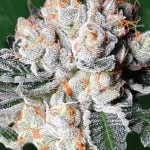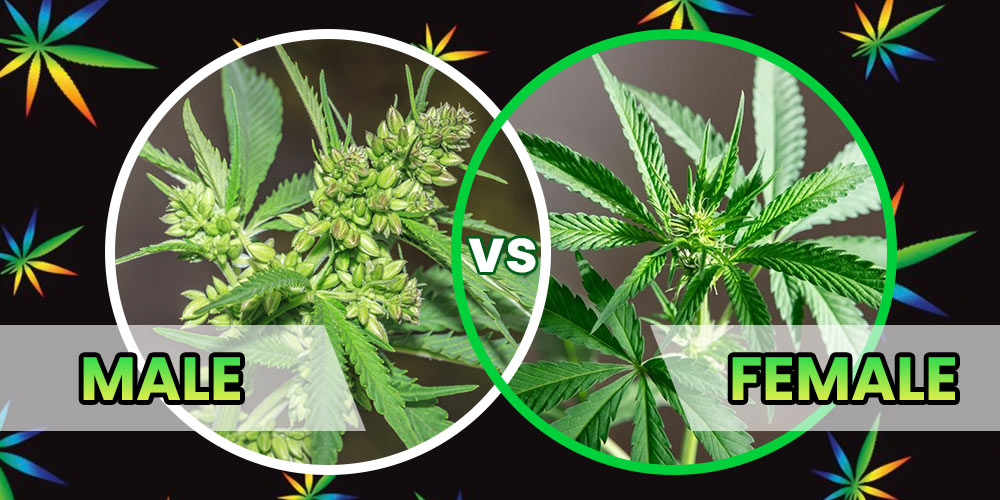


When embarking on the cultivation of Marijuana plants, you are bound to encounter many factors that significantly impact their growth. These factors encompass various aspects, including optimal growing conditions, suitable growing mediums, nutrient-rich soil, appropriate lighting, and perhaps the most crucial aspect, which involves discerning the sex of your cannabis plants. Understanding the distinctions between male and female weed plants is vital to successful cultivation. To gain further insight into this crucial matter and comprehend its significance, continue reading below.
Plant reproduction typically involves pollination, which can occur through various means.
Monoecious plants, known as hermaphrodites, possess flowers and pollen-producing organs on the same plant. They exhibit a unique characteristic of having both male and female reproductive organs, namely the pollen and the buds.
On the other hand, cannabis belongs to the category of dioecious plants, meaning they produce either male or female reproductive organs on separate plants. For successful reproduction to take place, both male and female plants are required.
When it comes to cannabis cultivation, plants can develop as either male or female, and it is possible to distinguish their growth patterns within a given environment.
The cultivation of female plants without male interference offers numerous advantages. One primary benefit is that female plants are responsible for producing the resinous buds unique to marijuana plants. By excluding male plants from the growing area, the cross-pollination process necessary for female plants to generate seeds is avoided.
The early removal of male marijuana plants brings several advantages. Firstly, it frees up much space for the female plants to grow luxuriantly and become bushier. Secondly, it prevents male plants from pollinating multiple female plants, thus averting the development of seeds within the buds. Cannabis buds containing seeds are generally considered lower quality and are primarily undesirable for smoking. The presence of seeds in the buds can also impact the potency and flavors of the cannabis, altering the overall experience.
However, this scenario holds promising news for growers intending to breed new strains of marijuana. On the other hand, it can be disheartening for cannabis growers who focus on cultivating marijuana for recreational and medicinal purposes, as the presence of seeds may diminish the desired qualities of the plant.
If you are planning to cultivate cannabis using regular seeds, which can produce either male or female plants, it is crucial to familiarize yourself with identifying female plants. Here’s what you need to know:
Female cannabis plants typically exhibit a bushier and shorter appearance than male plants with the same strain. They tend to have more leaves concentrated at the top of the plant. In contrast, male plants tend to grow taller but have fewer leaves overall.
To determine the gender of a cannabis plant, closely observe the joints or the area where the main stalk and branches meet. Look for small, thick hairs protruding from a tear-shaped bud nestled in the joint. These hairs, known as pistils, are a reliable indication that the plant is female.
Growers need to possess knowledge about differentiating between male and female cannabis plants. Thankfully, identifying their gender is relatively straightforward, as there are specific characteristics to look out for. Now, let’s delve into the traits of male cannabis plants:
Male plants typically have thicker stalks than female plants with the same strain. This is because male cannabis plants tend to grow taller and require a sturdier stalk to support their weight.
Male plants reveal their gender through sac-like structures located between the joints or where the branches and main stalk meet. These sacs contain pollen, indicating that the plant is male.
Male cannabis plants usually display their gender earlier than female plants. When grown indoors, males can exhibit male characteristics around 7 to 10 days earlier than females. Outdoors, male plants tend to show their gender approximately three weeks ahead of female plants.
The onset of the pre-flowering phase in cannabis plants can vary depending on several factors, including growing conditions, strain, and sex. For outdoor cultivation, this phase typically develops within the first 4 to 6 weeks of seasonal growth. By the sixth week, it becomes easier to identify male and female flowers when grown outdoors confidently.
To better observe the nodes where pre-flowers emerge, it is advisable to use magnifying lenses as these nodes can be quite challenging to see with the naked eye. When examining the plants with magnifying glasses, consider small sac-like growths or female bracts that will soon develop hair-like stigma, indicating their sex.
If your cannabis plants do not show pre-flowers by six weeks, it does not necessarily mean they are late-bloomers. This concept primarily applies to outdoor plants that rely heavily on exposure to natural daylight. However, if you are growing your plants indoors with a 24-hour light cycle, they likely may not initiate the pre-flowering phase.
Generally, a 12-12 light and dark cycle triggers the transition to pre-flowering. This means exposing the plants to 12 hours of light followed by 12 hours of uninterrupted darkness. Cannabis plants are highly photosensitive and require a few consecutive days of darkness to stimulate the pre-flowering stage.



Best Selling
Feminized Seeds
Regular Seeds
Customer Help
WE SELL MARIJUANA SEEDS IN THE USA
Best Selling
Feminized Seeds
Regular Seeds
Autoflowering
Customer Help
WE SELL MARIJUANA SEEDS IN THE USA